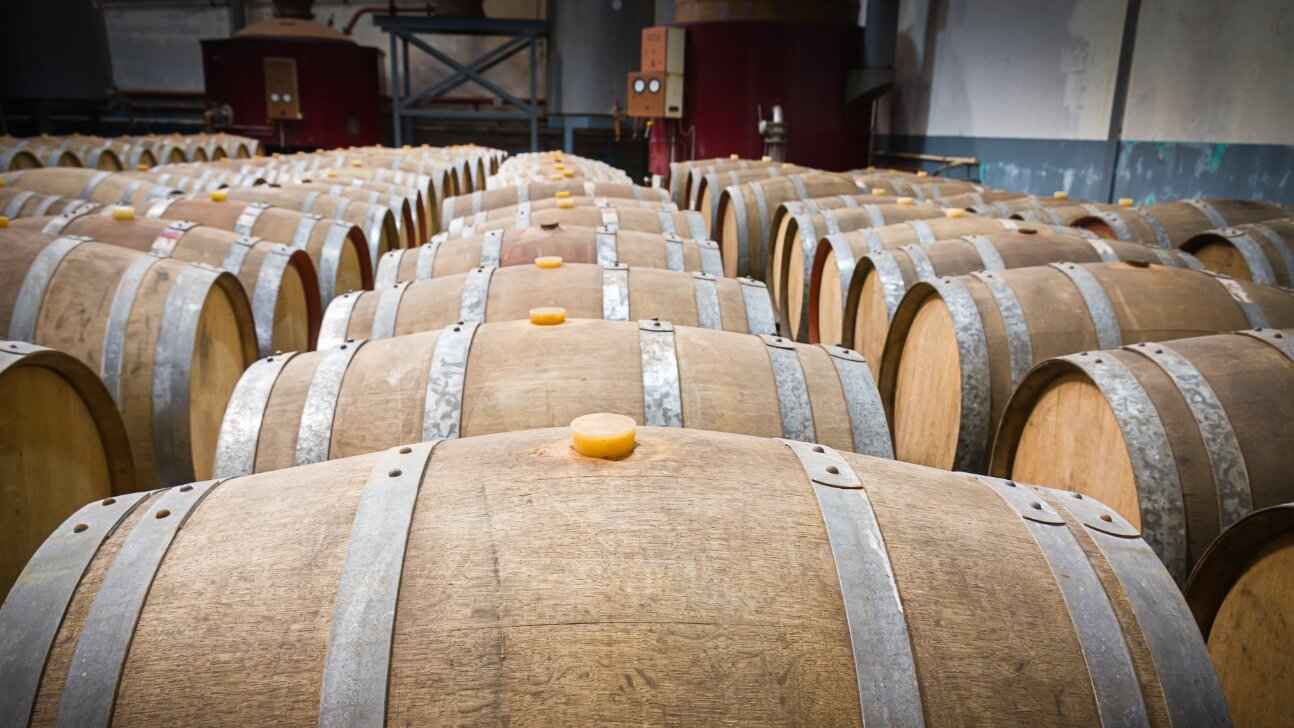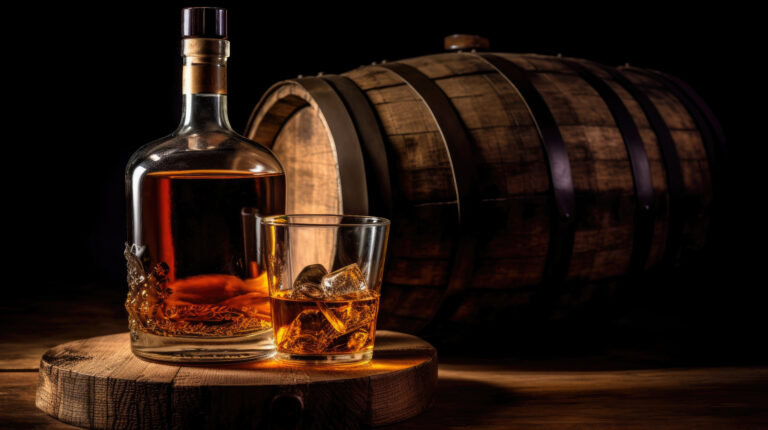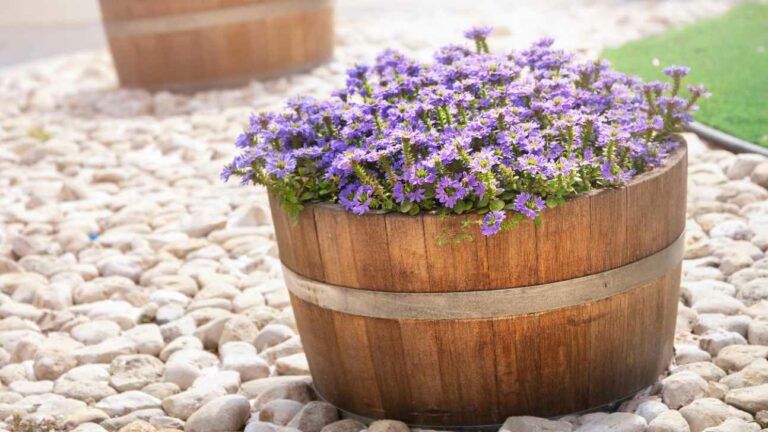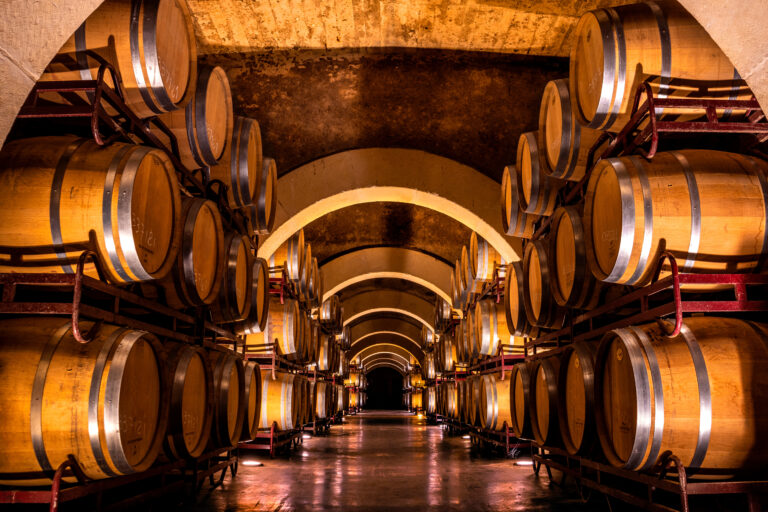Have you ever noticed that small hole in the side of a whiskey barrel? No, it’s not for peeking in to check how your whiskey is aging or for siphoning off a quick nip. That little hole actually serves an important purpose. As your whiskey sits patiently waiting in the charred oak barrel, natural changes start happening that affect the flavor, aroma, and color. But without that little hole, your whiskey wouldn’t become the complex, robust spirit you know and love.
The Hole Is Called a Bunghole
The hole in a whiskey barrel is called a bunghole. This opening allows distillers to fill and empty the barrel. Once filled, the bunghole is plugged with a bung, a wooden peg, to seal in the whiskey while it ages.
As whiskey matures in the barrel, a small amount evaporates through the bunghole, a process known as the ‘angel’s share’. This loss of volume concentrates the whiskey’s flavor and color. The bunghole also allows oxygen to interact with the whiskey, which helps develop its distinctive flavor and aroma compounds.
The bunghole is typically wider than the barrel’s staves (planks) to make filling and emptying easier. Its diameter depends on the type of barrel but is usually around 2 to 3 inches wide. The bung itself is hammered into place to create an airtight seal, essential for proper aging and preventing oxidation.
When the whiskey has reached maturity, distillers remove the bung to sample and test the whiskey. If ready, they’ll empty the entire barrel through the bunghole for bottling. The hole may then be reused if the barrel is refilled, or plugged if retired.
So next time you sip a glass of aged whiskey, remember that little hole, the bunghole, and its important role in creating that complex flavor you’re enjoying. Without it, there’d be no angel’s share, no oxidation, no proper aging – and no delicious whiskey as we know it!
The Purpose of the Bunghole
The bunghole allows distillers to fill and empty the barrel. A cork-like stopper, called a bung, is inserted into the bunghole to seal the barrel during aging. Removing the bung allows the distiller to fill the barrel with liquor and later extract the aged whiskey.
Barrel aging enhances the flavor of whiskeys like bourbon or Scotch. As the liquor sits in the barrel, it absorbs compounds from the charred oak, giving it a distinctive brown color and woody, spicy notes. The bunghole allows this interaction between the liquor and barrel during aging while still sealing in the contents.
• The bunghole size and shape are standardized to allow bungs to seal properly. An airtight seal is important, especially during the early stages of aging when more of the liquor can evaporate.
• The bunghole is positioned on the side of the barrel at an angle to allow easy access and to facilitate filling and emptying. The bunghole’s location and design have remained largely unchanged for centuries.
• Only when the distiller is ready to bottle the aged whiskey is the bung removed from the bunghole. At this point, the whiskey has taken on the flavor and aroma compounds that give each distillery’s product its own unique characteristics.
So next time you enjoy a glass of aged whiskey, you can appreciate the humble yet essential bunghole that made it all possible. Without this small hole, we wouldn’t have many of the fine, barrel-aged spirits we know and love today.
A Brief History of Bungholes
The small hole in whiskey barrels, commonly referred to as a “bunghole”, has a long and storied history.
A Brief History of Bungholes
Barrels have been used for centuries to age, store and transport goods, with records of wooden casks dating back as far as the Ancient Greeks and Romans. The bunghole was originally just a hole in the barrel that allowed for filling and emptying. Bungs, tapered wooden plugs, were pounded into the bunghole to seal the barrel.
As distillation techniques advanced, the bunghole became essential for aging distilled spirits like whiskey, brandy, and rum. The bunghole allows air to interact with the spirit, mellowing the flavor through oxidation and evaporation. This is how whiskey develops its distinctive caramel color and smooth, complex flavor during aging.
The size and shape of the bunghole impacts how much spirit is lost to evaporation, known as the “angel’s share”. A larger bunghole increases oxidation and evaporation, speeding up aging, while a smaller bunghole slows the aging process. Distillers choose bunghole sizes based on the type of spirit and desired aging. For example, bourbon uses a larger bunghole as it benefits from more evaporation, while scotch typically uses a smaller bunghole for slower aging.
The bunghole may be a small, unassuming part of a whiskey barrel, but it has a significant impact on the production of some of the world’s most prized spirits. Through controlling oxidation and evaporation, the bunghole shapes the distinctive flavor, aroma, and character of aged whiskies, linking today’s spirits with centuries of history and tradition. Though humble in appearance, the bunghole deserves recognition for its essential role in creating these amber elixirs.
Proper Care and Maintenance of the Bunghole
The small hole in a whiskey barrel, known as the bunghole, serves an important purpose.
Allowing Airflow
The bunghole allows for airflow into and out of the barrel. As the whiskey ages, the barrel breathes, and the bunghole makes this possible. Over time, a portion of the whiskey evaporates – this is known as the “angel’s share”. The bunghole allows these evaporated vapors to escape the barrel.
It also allows oxygen to enter the barrel, which helps the aging process. The oxygen triggers chemical reactions in the whiskey that give aged whiskey its characteristic flavor and color. Without the bunghole, the barrel would be completely airtight, preventing proper aging.
Filling and Emptying
The bunghole is also how barrels are filled and emptied. A bung, or cork, is used to seal the bunghole when the barrel is filled or aging whiskey. When it’s time to bottle, the bung is removed and the barrel is drained through the bunghole.
After the barrel is drained, water is often added to rinse out any remaining whiskey before the barrel is refilled. This also happens through the bunghole. Some distilleries will reuse barrels multiple times before replacing them.
Proper Care
To get the most use out of a barrel and maintain quality, the bunghole requires some care. The bung should fit snugly into the bunghole to prevent excess oxidation or evaporation during aging. However, it should still be somewhat loose to allow for expansion and contraction as temperatures change.
The area around the bunghole should also be regularly inspected for any leaks or cracks and repaired as needed. A leaky bunghole can lead to a significant loss of whiskey, known as the “weeping angel’s share”. By properly maintaining the bunghole, a whiskey barrel can last for several years and produce many fine batches of aged whiskey.
Keeping an eye on your barrel’s bunghole and ensuring it’s in good shape is well worth the effort. After all, it’s responsible for creating the rich flavors that make aged whiskey so enjoyable. Cheers!
FAQs About Bungholes
The hole in a whiskey barrel, known as the bunghole, serves an important purpose.
What is the bunghole?
The bunghole is simply the opening in the barrel that allows liquid to be poured in and out.
Once the barrel is filled, the bunghole is plugged with a bung, a wooden stopper that seals the barrel. The bunghole allows distillers to fill the barrel with whiskey and then seal it for aging. When the whiskey has aged to maturity, the bung is removed so the whiskey can be bottled.
Why is the bunghole necessary?
Without a bunghole, there would be no way to fill or empty the barrel. The bunghole provides access to the barrel interior and is essential for production.
How big is the bunghole?
The bunghole is typically a few inches in diameter, large enough to allow easy filling and emptying, but small enough to be sealed by a bung. The exact size can vary depending on the type of barrel and still.
Does the bunghole affect aging?
Yes, the bunghole plays an important role in aging whiskey. As the whiskey ages in the barrel, it expands and contracts with temperature changes. This movement in and out of the wood causes the whiskey to extract flavor and color compounds from the barrel. The bunghole allows some oxygen exposure, which is necessary for proper aging and mellowing of the whiskey. Too much oxygen exposure, however, can lead to oxidation and evaporation. The bung helps control oxygen levels during aging.
The bunghole may seem like a simple hole in the barrel, but it serves a vital purpose in whiskey production and aging. Without it, we wouldn’t have delicious aged whiskeys to enjoy! Understanding the role and purpose of each part of the barrel provides insight into the craft of making fine whiskey.
Final Thoughts
So there you have it, all your burning questions about that mysterious hole in whiskey barrels answered. Now you can impress friends at the bar by casually mentioning how the bunghole allows for expansion and breathing, or how the char inside imparts that signature smoky flavor. Pretty neat how such a simple-looking barrel has so much going on. Next time you see a barrel, you’ll look at it with a new appreciation for the craft and care that goes into aging fine spirits. And of course, you’ll never be able to unsee that bunghole – you’re welcome! But seriously, hopefully this scratched an itch of curiosity and gave you a glimpse into a process that’s been perfected over centuries. Here’s to gaining knowledge and appreciating the little details in life. Cheers!







